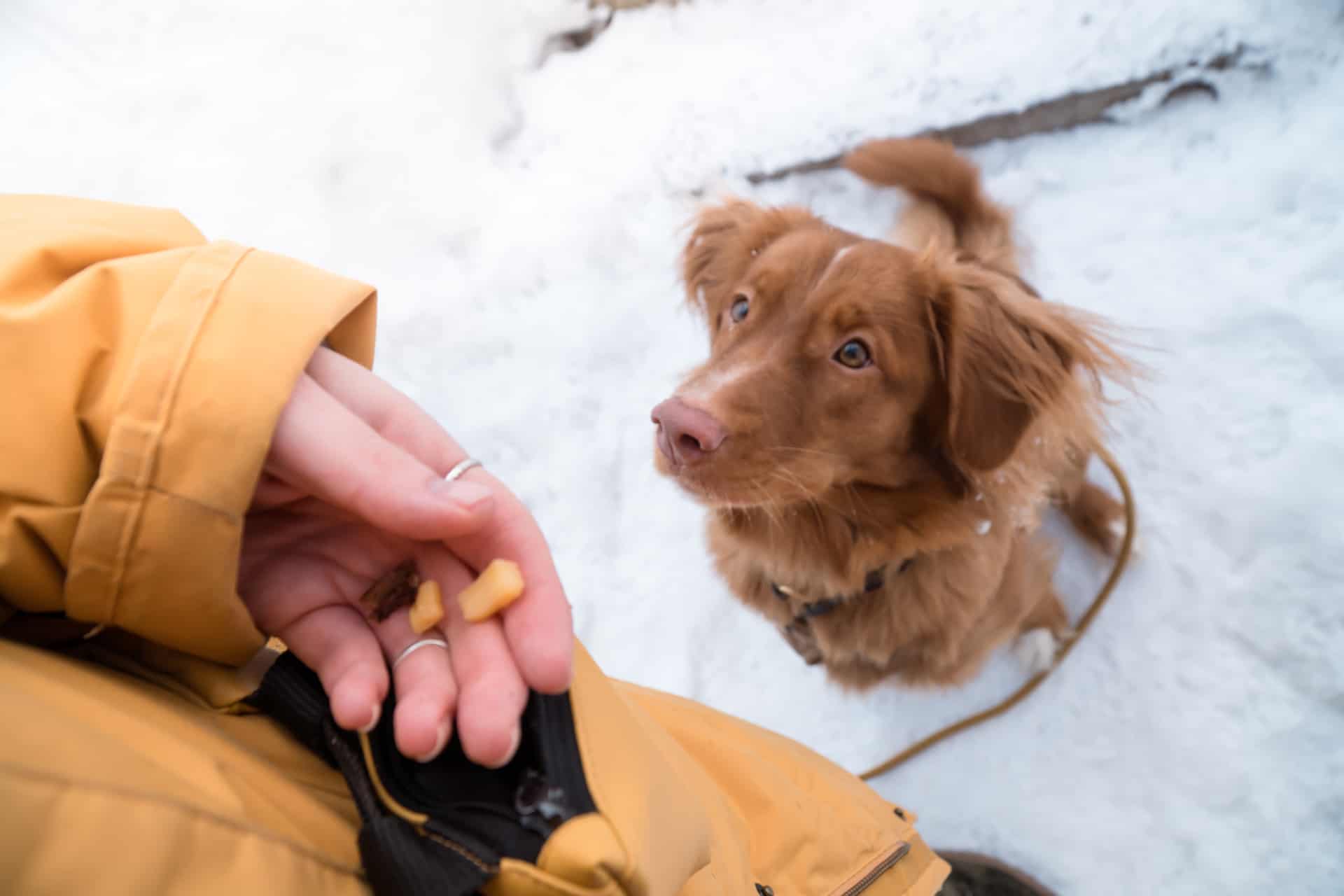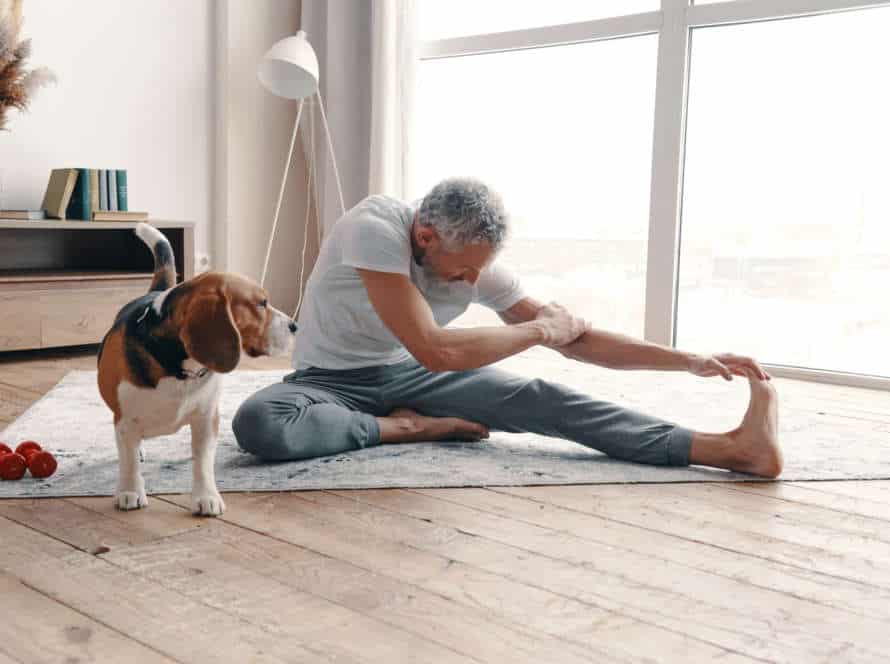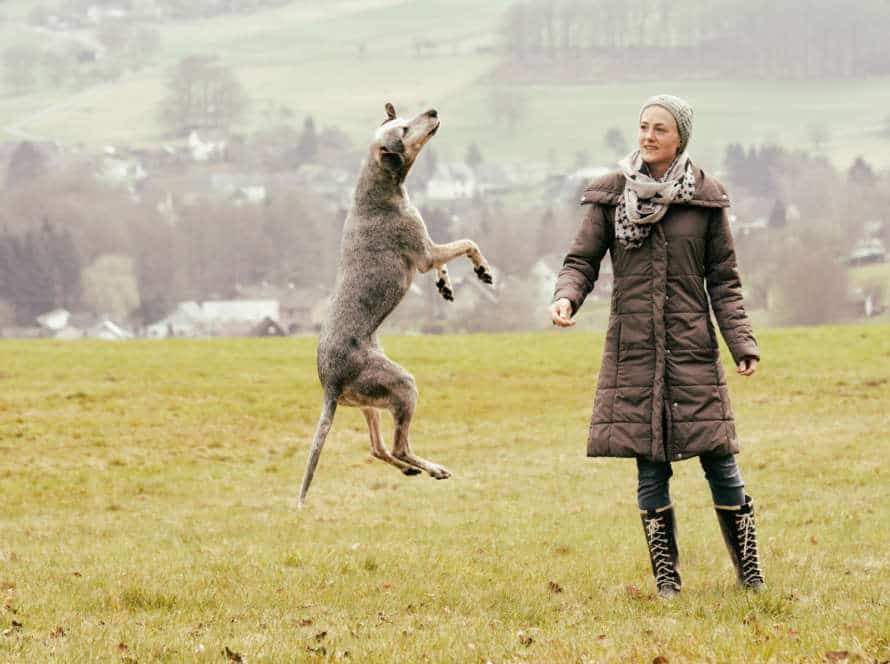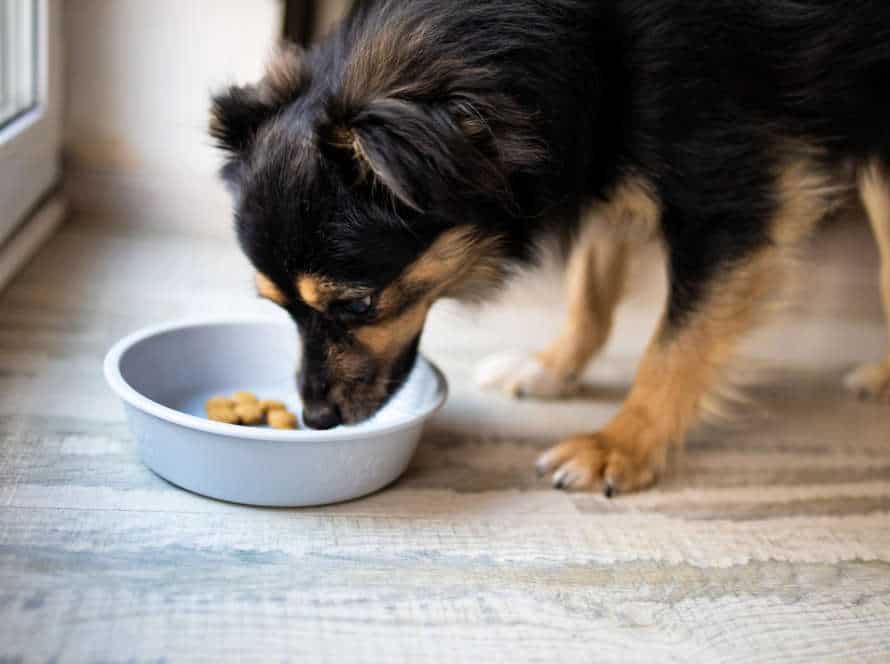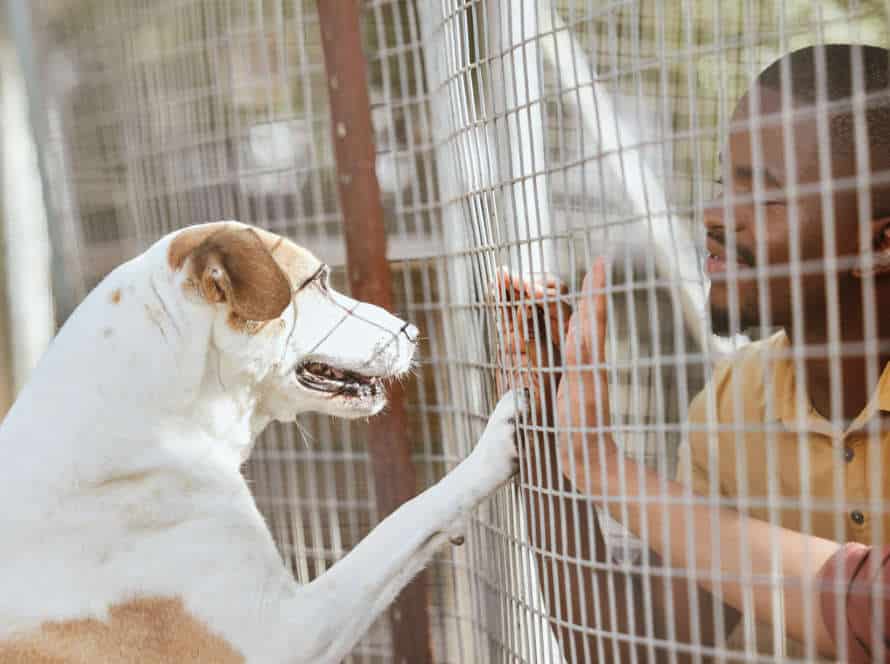The Benefits of Using Positive Reinforcement in Dog Training
Utilizing positive reinforcement in dog training has lots of advantages, not just for the pup, but also the owner.
Positive reinforcement techniques involve awarding the canine for good behavior, instead of punishing them for bad behavior. This helps to strengthen the connection between the owner and the pup, as well as allowing the dog to comprehend what is expected from them.
Here are some of the advantages of positive reinforcement in dog training:
- Establishes a Strong Relationship between Owner and Dog.
- Stimulates Preferred Behaviors.
- Creates a Safe Training Environment.
- Decreases Aggression and Fear.
- Promotes the Mental Health and Wellbeing of the Dog.
Positive reinforcement is a kind and effective way to train your dog, and the benefits are worth it!
Why Positive Reinforcement Should be Used in Dog Training
Positive reinforcement is a popular, effectual technique for dog training. It’s based on operant conditioning and encourages desired behaviours by rewarding or reinforcing them when they are exhibited. Positive reinforcement establishes desired behaviour, encourages learning, and strengthens the pet-trainer relationship.
We’ll look at the various benefits of using positive reinforcement in dog training in this article.
The Negative Effects of Punishment-Based Training
Punishment-based training for dogs can have a detrimental effect on their behavior and wellbeing. Positive reinforcement is therefore the better choice.
Here’s why:
Punishment-based training can cause fear, anxiety and aggression in dogs. This is because they link punishment with the person who is administering it, making them scared or avoiding them. Furthermore, punishment can make the behaviour that was intended to be corrected, worse – leaving the dog feeling frustrated and confused.
On the contrary, positive reinforcement training is a healthier alternative and it uses rewards like treats, toys, and praise to encourage good behaviour. This helps build a positive bond between the dog and the person training them, giving them more confidence and making them more willing to learn.
To sum it up, positive reinforcement in dog training sets them up for a successful and content life, with a strong relationship based on trust between the dog and its owner.
Positive Reinforcement Builds Trust and Stronger Bonds with Your Dog
Positive reinforcement techniques are the top way to create trust and a strong bond with your pup while teaching them too! Benefits of using these methods include:
- Creating a happy and secure learning space for your dog. Positive reinforcement focuses on celebrating good behavior, not punishing bad, to make an anxiety-free training environment.
- Building trust and connection between you and your pup. Positive reinforcement techniques show your pup you are a source of positive and rewarding experiences, strengthening their bond and trust in you.
- Encouraging your pup to keep up the good work. By giving treats, compliments, and love when they do something good, you are giving them a strong reason to do it again.
- Making training fun and enjoyable for both of you. Using positive reinforcement requires patience, consistency, and time, but results in a content and well-behaved pup!
Positive Reinforcement Encourages Desired Behaviors
Positive reinforcement is a great tool in dog training. It focuses on rewarding good behavior instead of punishing bad ones. This creates a positive learning environment and strengthens the bond between you and your pup. Here are the benefits:
- It builds trust. Positive reinforcement creates a trusting bond between the dog and the owner, by promoting activities that are pleasurable for them.
- It boosts desired behavior. Rewarding good behavior increases the chance that it will be repeated.
- It stimulates their mind. Positive reinforcement training encourages dogs to think and problem-solve, improving their cognitive abilities.
- It lowers stress and anxiety. Harsh punishments can cause anxiety and stress, leading to bad behavior. Positive reinforcement avoids this, with a focus on positive experiences.
Overall, positive reinforcement leads to a happier, better-behaved and healthier dog.
How to Implement Positive Reinforcement in Your Dog Training
Positive reinforcement is a great way to change a dog’s behaviour. It is done by giving rewards like treats, verbal praise, and physical affection when the desired behaviour occurs. This is beneficial for both pup and owner, as it helps the pet owner train their pooch in a positive way. So, let us explore how to use positive reinforcement for canine training.
Identifying Dogs’ Rewards and Punishments
Positive reinforcement in dog training can help build a healthy relationship between you and your pet. It involves rewarding good behaviour instead of punishing bad behaviour.
To do this, you need to recognize your dog’s rewards and punishments. Rewards could be treats, attention, or playtime. Punishments can be ignoring them, withholding attention, or redirecting them.
Positive reinforcement helps your dog understand and repeat good behaviour, boosts their confidence, and strengthens your bond. To do this, identify your dog’s likes and dislikes and use them for successful training.
Starting with Simple Commands
Positive reinforcement is a great way to train your pup! It rewards good behavior with treats, praise, or playtime. Here are some simple commands you can start with:
- Sit: Hold a treat above their nose and move it towards their tail. As they lift their head, their backend will lower. Praise and give the treat when they sit.
- Stay: Ask them to sit, then hold your hand up and say ‘stay’. Step back and then step forward. Reward them with a treat and praise if they stay put.
- Come: Have them on a leash and say ‘come’. Praise and offer a treat when they move towards you.
Positive reinforcement has many benefits. It increases bonding, motivates learning, and reduces behavioral issues.
Progressing to Complex Commands
Positive reinforcement is an awesome way to train your dog. Once your pup knows the basics, you can move on to more complex commands using positive reinforcement. Here’s what to do:
- Create a plan that breaks the new command into easier parts.
- Use treats or praise to reward your pup for each successful step of the plan.
- Repeat the plan regularly, gradually making it harder until your pup knows the command.
- Keep an eye on the progress and adjust the plan as needed.
Positive reinforcement has lots of benefits. It strengthens the bond between you two, builds your pup’s self-confidence, and makes training a pleasant experience.
Tools You Need for Positive Reinforcement Training
Positive reinforcement is a awesome way to train your pup! It helps to promote a behavior that your pup should repeat, which will bring about better behavior. To make use of it properly, you will require a few items. These tools will help your pooch comprehend rewards and penalties for learning and responding. Let’s take a glance at what tools are needed for positive reinforcement.
Treats and Toys
Treats and toys are key for positive reinforcement training in dogs. This type of training is humane and efficient. It involves rewarding good behavior with treats, attention, or playtime. It encourages desirable behavior to be repeated.
Benefits of treats and toys in positive reinforcement training:
- Motivation – Treats and toys make dogs more willing to learn and focus during training.
- Positive association – Using these helps create a link between training and good behavior. So, the dog will be more likely to repeat the desired behavior.
- Variety – Different treats and toys keep the dog engaged and interested. This reduces boredom and frustration.
It’s essential to choose the right treats and toys for your dog. This depends on age, size, and individual preferences. That way, they will enjoy the training and get the most out of it.
Clickers and Verbal Praise
Clickers and verbal praise? Essential tools for dog training! They cooperate to reinforce positive behavior.
Clickers make a distinct, consistent sound when clicked. This helps dogs understand which behavior they’re being rewarded for.
Verbal praise is fantastic too. Dogs love positive attention, so commands like “good boy” or “well done” boost their positive behavior.
Clickers and verbal praise – together, they create a powerful pairing. It’s perfect for owners who want to train their pet without punishments.
Keeping a Positive Attitude
Having a positive outlook is a must for achieving success in positive reinforcement dog training. Here are some ways to help you maintain your positivity throughout the process:
- Appreciate each success, no matter how miniscule, and pay attention to the development of your pup.
- Stay collected and patient, even if your dog is having difficulty learning a new command.
- Utilize positive reinforcement techniques like treats, compliments, and playtime to motivate and reward your pup.
- Keep practice periods short and enjoyable, and wind up each session on a positive note.
By utilizing positive reinforcement techniques, you can build a closer bond with your dog and obtain better outcomes than with oppressive training methods. So remain positive and relish the journey!
Common Pitfalls to Avoid in Positive Reinforcement Training
Positive reinforcement is a great way to train your pup. However, misusing it can have bad effects for both you and your dog. Let’s take a look at the common problems to avoid. Avoiding them is key to getting the most out of this training technique.
Not Reinforcing Timely or Consistently
Avoiding to reinforce timely or consistently is a common mistake in positive reinforcement training for dogs. Positive reinforcement is a technique that uses rewards for desirable behaviors to encourage them to happen again. Timely and consistent reinforcement is essential for it to work.
Why?
- Timely reinforcement: Dogs must connect the reward to their wanted behavior to do it again. If the reward is delayed, they won’t know what earned it. Therefore, give the reward right after the desired action.
- Consistent reinforcement: Dogs are creatures of habit and need a consistent training routine to learn. Inconsistent reinforcement will cause confusion and slow their learning.
Pro tip: Keep the rewards small and consistent. Give verbal praise with the treat to reinforce good behavior in your pet.
Giving Too Many Rewards or Overfeeding
Giving too much or overfeeding rewards during positive reinforcement training can be bad. It can undermine the training and cause health issues for your dog. Positive reinforcement encourages wanted behavior and discourages unwanted ones. But, if over-rewarding or overfeeding, your pup may lose motivation and could become unhealthy or overweight. To prevent this, use treats and rewards sparingly. Watch your dog’s diet and exercise routine too. Using positive reinforcement in a consistent and moderate way will help your pup stay healthy and happy.
Pro tip – Use small-sized healthy treats, praise words for rewards, and don’t overfeed!
Dependency on Training Aids
Dependency on training aids is a common blunder when you practice positive reinforcement training for dogs. It creates an unhealthy reliance on external tools rather than internal motivation. Training aids can be useful when teaching new behaviors and rewarding positive behaviors, but they must not be the only source of reinforcement.
A few tips to avoid dependency:
- Start with simple behaviors and then move to more complex ones without training aids.
- Use treats and praise as primary motivators instead of training aids.
- Phase out the use of training aids as your pup gets more consistent in their behaviors.
- Include natural rewards, like playtime or access to toys, in your training sessions.
The goal of positive reinforcement training is to build a strong bond between you and your dog based on trust and respect. Avoiding the reliance on training aids will help create a more natural and effective training relationship.
Long-Term Benefits of Positive Reinforcement Dog Training
Positive reinforcement dog training is a humane and helpful way to modify your pup’s behaviour. It entails rewarding good behaviours with treats, toys and verbal appreciation. Investigations have revealed that positive reinforcement dog training has long-term advantages for your pooch. Let’s take a better look at these gains!
Greater Confidence in Your Dog
Positive reinforcement dog training can be great for long-term behavior and confidence. How it works? Reward your dog with treats, praise, or playtime when they do good. This encourages them to do it again.
Rather than punishing, focus on what you want them to do. With consistency, your dog will learn to respond to your commands.
Positive reinforcement can help your dog’s mental health and confidence. Dogs trained this way are usually less anxious, aggressive, or fearful.
Pro tip: Use small, bite-sized treats to motivate your dog and keep their attention on the task!
Reduced Aggressive Behaviors
Positive reinforcement-based dog training has been proven to reduce aggressive dog behaviors in the long run. It’s a better option than punishment-based training.
Why? Positive reinforcement focuses on rewarding desired behaviors with treats, praise and playtime. This creates a positive learning experience, strengthening the bond between you and your pet.
When your dog shows aggression, positive reinforcement can help redirect their energy into more acceptable behaviors. It also provides long-term benefits like increased confidence, obedience and a decrease in anxiety.
Unlike punishment-based training, positive reinforcement doesn’t cause fear, aggression or stress, making it safer and more enjoyable for you and your furry friend.
Better Communication with Your Canine Companion
Positive reinforcement is a mighty tool for improving the way you and your pup talk, and for forming a long-term bond. Here are some of the gains:
- Boosts Learning: Good acts get rewarded. This helps dogs learn quicker, and remember better.
- Strengthens Bond: Trust increases by rewarding desirable behaviour. Dogs will want to please owners for the rewards.
- Fosters Positive Behaviour: Positive reinforcement increases the chance of desirable behaviour and minimises undesirable ones. This can shape your pet’s personality and make them content.
- Stops Negative Effects: Positive reinforcement training avoids aggression and fear that can be caused by negative reinforcement or punishment methods.
By using positive reinforcement techniques when teaching your dog, you’ll be able to communicate better with your furry mate. This will result in a more pleasant and healthier relationship.
Frequently Asked Questions
Q: What is positive reinforcement in dog training?
A: Positive reinforcement is a training technique that rewards a dog for displaying desired behavior with treats, praise or affection, rather than punishing them for bad behavior.
Q: What are the benefits of using positive reinforcement in dog training?
A: Positive reinforcement has been shown to be more effective, and it improves the bond and trust between dog and owner, leading to a happier, healthier and better-behaved dog.
Q: How do I implement positive reinforcement in training my dog?
A: Start by identifying what motivates your dog (e.g. treats, toys or praise), and use these as rewards for good behavior. Make sure to give immediate, consistent and frequent rewards to reinforce the desired behavior.
Q: Can positive reinforcement be used for all dog breeds?
A: Yes, positive reinforcement can be used for all dog breeds, as it is a gentle and humane approach to training that works with and celebrates the unique qualities and personalities of all dogs.
Q: Is positive reinforcement a better training method than punishment?
A: Yes, positive reinforcement is a more effective, safe and ethical training method than punishment, which can cause fear, anxiety and aggression in dogs.
Q: Can positive reinforcement training be used for more advanced training and behavior modification?
A: Yes, positive reinforcement can be used for a variety of training needs, including advanced obedience training, behavior modification, and even therapy dog training.

